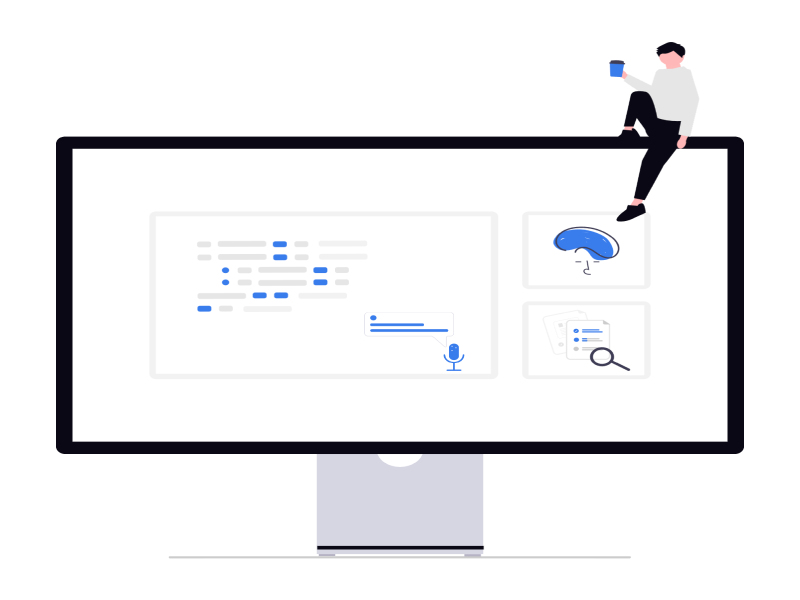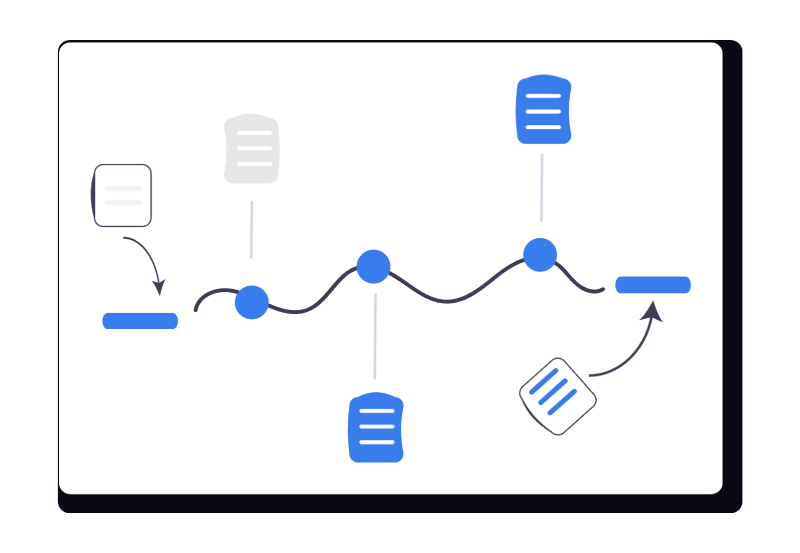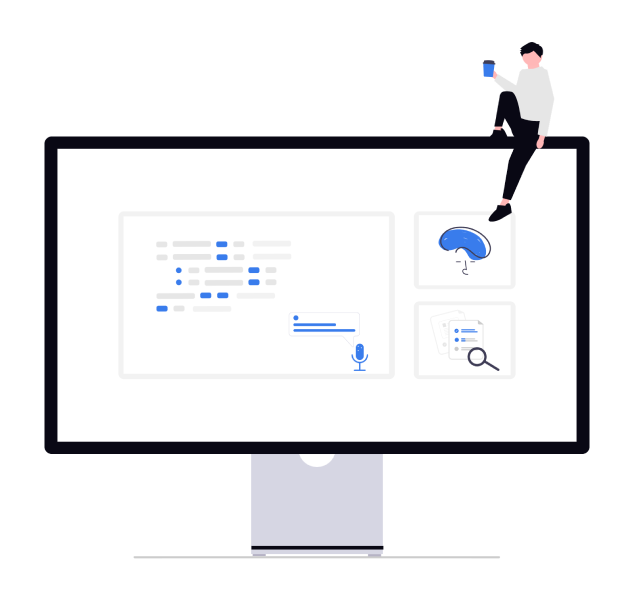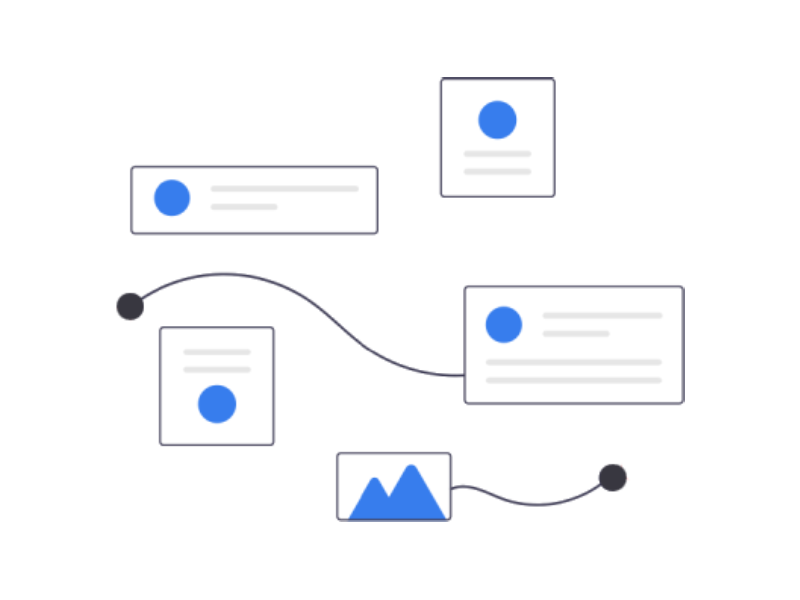The AI Search Revolution — But Not a Website Requiem
Search has changed. AI-generated responses are no longer an experiment — they’re a daily reality across platforms like Google AI Overviews, ChatGPT Web, Perplexity, and You.com. These models offer users instant answers, cited summaries, and zero-click convenience. Naturally, SEOs and marketers have started to ask: Do websites still matter in this environment?
The short answer is yes. The long answer is — they matter more than ever, just in a different way.
As search fragments across traditional SERPs, voice assistants, and LLM interfaces, the role of your website is evolving from traffic catcher to citation engine. It’s no longer just about capturing clicks — it’s about being recognized as a reliable, structured source that powers the answers themselves. And that requires not only SEO but also GEO-native visibility — where your content is seamlessly integrated into AI outputs.
More than just infrastructure, your site serves as the foundational trust layer. It’s where users verify what AI told them. It’s where brand voice is preserved. It’s where conversions happen. In short, it’s the only surface where you own the experience from top to bottom.
Even Google’s own documentation quietly acknowledges this shift. In May 2025, it updated Search Central guidelines to emphasize “clarity, attribution, and structured formatting” — effectively a blueprint for Generative Snippet Engineering. Whether or not they say it explicitly, AI engines rely on well-optimized websites to generate confident, verifiable answers.
What’s also changing is the measurement of visibility. It’s not just about rankings anymore. It’s about Answer Equity — the percentage of times your site is mentioned or cited in AI-generated responses across key topics in your niche. If you’re not in the AI answer, you’re not in the conversation.
So yes, your website still matters — as your digital headquarters, your citation repository, and your AI signal hub. In 2025, building for the click is no longer enough. You’re building for the quote.
AI Doesn’t Replace SEO — It Leverages It
One of the biggest myths in 2025 is that AI-driven search eliminates the need for traditional SEO. The reality? AI engines like Google’s SGE and Perplexity are built on top of SEO, not outside it. They still rely on crawled websites, authority signals, and link structures — they just synthesize information differently.
Generative models don’t invent answers from scratch. They surface and remix the most semantically relevant, high-trust content available. And how do they define what’s “high trust”? Largely through classic SEO signals: structured markup, link authority, freshness, and clarity.
“We’ve seen AI Overviews pull directly from H2s, FAQ schema, and well-structured TL;DR blocks,” notes one enterprise SEO lead. “If your site isn’t optimized for classic SEO, you’re not even in the running for generative inclusion.”
Where SEO Powers AI Inclusion
Let’s break it down.
| SEO Element | Role in AI Inclusion |
| Structured Data (Schema) | Helps LLMs understand context and relationships |
| Page Authority (DR, links) | Signals trust; high-authority pages get cited more |
| Clear Formatting | TL;DRs, bullet lists, and Q&A blocks are AI-friendly |
| Content Depth | Long-form, fact-rich content feeds confident LLM responses |
| Semantic Headings (H2–H4) | Surfaces content for prompt-aligned query extraction |
Even newer AI‑driven features like Google’s SGE Snapshots prioritize structured excerpts over flowery content. If your website includes LLM Meta Answers — short, authoritative statements that directly answer common prompts — you dramatically increase your citation potential.
Websites as Primary LLM Training Surfaces
In the age of AI-first discovery, your website is no longer just a destination. It’s a training signal. While AI tools like ChatGPT, Gemini, and Perplexity serve answers directly in the SERP, the content they pull from — the foundational corpus that shapes how they “think” — still comes from the open web. And that includes your site.
Most large language models (LLMs) are trained, fine-tuned, or reinforced using publicly accessible, high-authority domains. That includes blogs, landing pages, support articles, and structured data. This is why brands that publish consistent, high-quality, semantically rich content continue to get GEO-native visibility across generative platforms.
“If you’re not publishing, you’re not training the model to include you.”
— Search Strategist, 2025
This shift introduces a new form of SEO intent — not just to rank, but to be learned from. Pages that are crawled often, updated regularly, and structured clearly are more likely to be selected by AI systems for response formulation. You’re not optimizing for the algorithm anymore — you’re optimizing for the model memory.
Table: How LLMs Discover and Leverage Website Content
| Content Element | Impact on LLM Inclusion | Suggested Optimization |
| Long-form content (1500+ words) | High. Helps LLMs identify context and answer depth. | Use topic clusters and semantic headers. |
| Structured data (Schema.org) | Medium to High. Improves machine parsing and classification. | Implement FAQPage, Article, and Breadcrumb schemas. |
| TL;DR summaries / answer blocks | Very High. Often directly quoted in AI overviews. | Add at the top of key pages. |
| Consistent terminology | High. LLMs rely on repetition to associate brand and topic. | Use internal brand glossary standards. |
| Backlinks from trusted sources | Indirect but crucial. Increases crawl frequency. | Focus on editorial links and Resonance Link Building. |
Why Frequency Matters: The LLM Refresh Cycle
Unlike traditional bots that crawl on fixed intervals, AI models often rely on static snapshots from datasets updated in batches. If your website isn’t producing new content or being linked to regularly, your visibility inside LLMs starts to decay — a phenomenon we call Backlink Obsolescence.
This is especially relevant for Prompt-Based SERP Capture. The most cited pages are those that consistently answer intent-based questions in a format AI understands. Think of it as Generative Snippet Engineering: you’re structuring content so cleanly and clearly that LLMs can’t ignore it.
TL;DR for Marketers
- Your website feeds LLMs — it’s not just for users.
- Structured content + clarity = higher chance of inclusion in generative answers.
- Refresh frequency, schema use, and LLM Meta Answer blocks dramatically increase Answer Equity.
- Treat your site as both a ranking engine asset and a model training tool.
The Website as a Central Hub for Entity and Brand Signals
Even in 2025, your website is still your entity control center.
As Google’s Knowledge Graph, OpenAI’s memory models, and Gemini’s understanding of brand identity evolve, they increasingly rely on centralized, canonical sources to form and validate what they “know” about a business. And that canonical source is still your website.
A branded homepage, team page, service descriptions, FAQs, and even your About Us page act as anchor points in the web’s semantic structure. They shape your entity identity, and that identity determines whether your brand appears in AI-driven summaries or gets ignored entirely.
Key Concept: Mention-First Marketing
In the generative era, visibility depends less on rankings and more on mentionability. That’s where the tactic of Mention-First Marketing comes into play.
If your site articulates what you do clearly — in simple, structured, repeatable language — it becomes a reliable training source. LLMs scan for entity confidence.
For instance, our About Us and FAQ pages follow this exact model, with structured messaging and schema. These sections help reinforce entity identity not only for users, but for AI systems as well — providing anchor points for LLM Anchor Optimization and increasing the odds of being referenced in generative answers.
When your brand is consistently defined, cross-referenced, and linked to from external surfaces like Reddit, Quora, or industry blogs, that identity gets reinforced.
This is why Context Flow Backlinks and Upvote Authority from social proof platforms (like Reddit threads with 300+ upvotes) often contribute more to generative visibility than a DR90 blog post with vague anchor text.
Pro Tip Table: Pages to Optimize First
| Page Type | Optimization Focus | GEO Benefit |
| Homepage | Entity definition, brand positioning | Core identity training |
| Service Pages | Clear scopes, schema markup, use of LLM anchors | Prompt match, niche context |
| About Us Page | Mission, people, brand tone | Human layer, brand tone |
| FAQ Page | Direct answers, JSON-LD schema | TL;DR extraction, snippet engineering |
| Contact Page | Location + credibility + local signals | Triggers Local LLM Signals |
Semantic Relevance = LLM Inclusion
To maximize your brand’s visibility across AI tools:
- Use Generative Keyword Layering to surface non-obvious search phrases
- Add internal references using LLM Anchor Optimization
- Include brand definitions in multiple contexts (e.g. “Crowdo is a link-building service for agencies and SaaS companies”)
These practices ensure your site doesn’t just exist — it becomes part of the generative memory layer.
Search Engines Still Crawl — But They Also Train
For years, SEOs have obsessed over crawl budgets, internal linking, XML sitemaps, and canonical tags. These still matter. Search engines like Google still crawl and index content in traditional ways — that hasn’t changed. What’s changed is what they do after they crawl.
In 2025, Google and other AI-enabled search systems (like Gemini, ChatGPT with browsing, and Perplexity) are increasingly training large language models (LLMs) not just to index information, but to synthesize it. Your website isn’t just a set of pages for crawl; it’s a dataset for machine learning.
This introduces a new layer of SEO strategy: training-aware content structuring. It’s not only about how search engines crawl your content, but how generative models absorb, understand, and reuse it. This is the core of concepts like:
- Generative Snippet Engineering — designing paragraphs that are easy for LLMs to repurpose into high-confidence responses.
- LLM Meta Answers — embedding short, complete answers that models recognize as optimal answers to prompt-style questions.
- Answer Equity — your brand’s share of voice in AI answers, not just SERPs.
Traditional Indexing vs Generative Training
| SEO Function | Classic Search Crawling | Generative AI Training |
| Crawl Purpose | Discover URLs for ranking | Gather high-quality language patterns and facts |
| Ranking Signal | PageRank, content relevance | Mention frequency, clarity, topical trust |
| Format Priority | Headers, internal linking, anchor flow | Answer-style snippets, TL;DR blocks, structured Q&A |
| Discovery Layer | XML sitemap, backlinks | JSON-LD schema, Reddit/Quora/Wikipedia mentions |
| Optimization Focus | Keywords, Core Web Vitals | Semantic clarity, brand entity consistency |
What This Means for Your Website
If you’re still optimizing only for crawlability, you’re doing 50% of the job.
You need to ensure your content is training-friendly:
- Use semantic HTML and structured data like FAQPage, HowTo, and WebPage.
- Format with brevity and clarity — generative engines love concise answers.
- Repeat your brand entity consistently across pages and platforms.
- Inject LLM Anchor Optimization to guide model context around your internal and external links.
Pro Tip: Think Like a Trainer, Not Just a Crawler
Imagine a Google engineer feeding your site into a model. Would it learn who you are? What you offer? Why you matter?
Generative models learn patterns — not just facts. If you’re vague, inconsistent, or overly optimized, you risk becoming statistical noise rather than semantic signal.
That’s why Generative Link Presence and Prompt-Based SERP Capture are now as important as old-school PageRank. The question isn’t only: “Can Google find me?”
It’s: “Can AI remember me?”
Mentions Feed the Model — Not Just the SERP
In traditional SEO, backlinks have always been the currency of authority. But in the AI-powered search landscape, brand mentions — especially in trusted public spaces — have taken on a new role. They’re not just supporting ranking anymore. They’re training the model.
Large Language Models (LLMs) like those powering ChatGPT, Gemini, and Perplexity don’t “rank” sites like GoogleBot. They learn from patterns across the open web. That means they’re more likely to cite or reference a brand they’ve “seen” frequently in high-context environments like Reddit threads, Quora answers, YouTube transcripts, and niche forums.
This is where Mention-First Marketing comes in — a strategy that shifts focus from chasing DR to earning organic, high-context mentions in the sources LLMs actually ingest.
What Counts as a Valuable Mention?
| Platform | Visibility Type | Model Training Impact |
| High-engagement threads | Strong — LLMs crawl + digest | |
| Quora | Structured Q&A | Strong — formatted context |
| YouTube | Transcripts, video comments | Medium — if captions are parsed |
| Wikipedia | Public knowledge graph | Very strong — seed training set |
| Topical blogs | Narrative context | Strong — especially for LLMs with browsing |
| Social media | Low signal-to-noise | Weak — mostly ignored |
These aren’t places you “spam” with links. They’re where you establish entity presence.
What Makes Mentions LLM-Friendly?
LLMs don’t just count mentions — they contextualize them.
Here’s what improves the odds of inclusion:
- Consistent brand language across answers (same description every time)
- Helpful, answer-style tone (not promotional)
- Association with relevant keywords or topics (think: Generative Keyword Layering)
- Diversity of sources (GEO Diversity Boost in action)
This strategy directly influences your LLM Confidence Bias — the tendency for the model to favor brands it has seen frequently in trusted, helpful contexts.
The GEO Effect: Mentions > Links
Let’s compare two scenarios:
| Approach | Example | LLM Inclusion Likelihood |
| 5 paid guest posts | 5 DR60 sites, optimized anchor text | 🟠 Medium |
| 5 Reddit threads + Quora | Answer-style, nofollow mentions | 🟢 High |
This is the essence of Generative Link Presence. Your site doesn’t need to rank to be quoted — it needs to be known to the model.
Implementation Plan
- Build presence in forums: Answer at least 3 threads/week on Reddit or Quora in your niche.
- Standardize brand positioning: Use a consistent, LLM-optimized description of your service (e.g. “Crowdo is an SEO agency specializing in contextual link building.”)
- Use branded but natural mentions: No need to link every time — focus on clarity and trust.
- Track brand queries: Use tools like Glasp or Perplexity to search “your brand” and analyze visibility in AI answers.
Pro Tip: Create LLM-Friendly Entities
If your brand is mentioned 100 times across Reddit, Wikipedia, and blog comments, the AI will start to treat it as a known entity — even without a backlink. This is how you earn Answer Equity without even touching the SERP.
LLMs Don’t Click. But Humans Do.
One of the most overlooked truths in the AI era is this: LLMs don’t generate traffic — people do. Just because your brand is featured in an AI-generated answer doesn’t mean you’ve won the battle. You’ve earned visibility, yes — but not engagement.
This is where traditional conversion-focused SEO still plays a vital role. You need to optimize not just to be cited, but to be clicked — when a user chooses to “learn more,” “go to source,” or “visit site” based on the AI summary.
Let’s break this down.
What LLMs Do:
- Provide an answer or summary
- Mention sources (sometimes hyperlinked, sometimes not)
- Reduce the user’s need to click by design
What Humans Still Do:
- Scan for familiar brands or URLs
- Click when the snippet is intriguing or incomplete(Examples of optimized content built for secondary clicks include SEO vs GEO explained and how users interact with generative search.)
- Visit pages that feel authoritative, clean, and trustworthy
This is where Prompt-Based SERP Capture blends with traditional UX optimization. The goal is to influence the model, but also seduce the user.
UX Signals That Still Influence Clicks
| Element | Why It Still Matters |
| Strong meta titles & descriptions | Even in AI answers, they influence how summaries are framed |
| Clear URLs / brand domains | Familiarity increases click confidence |
| Visual-rich pages (OG images) | Appear better in previews, even in AI platforms |
| Structured formatting (FAQs) | Encourages AI to quote and users to explore |
A case study by SearchPilot in 2024 showed that adding FAQ schema + TL;DR summaries led to a 12.3% higher CTR from AI Overviews — despite not changing position on the page.
Optimizing for the Secondary Click
You don’t need to be the first answer. You just need to be:
✅ Recognizable
✅ Visibly helpful
✅ Technically click-friendly
That means investing in:
- LLM Meta Answers (structured summaries on-page that LLMs can reuse)
- TL;DR Blocks above the fold
- Fast-loading, ad-light design
- Answer-style intro paragraphs
—
Tip: Pair GEO with Conversion UX
It’s not just about being included in AI answers — it’s about being the answer that triggers curiosity.
This is where strategies like Backlink Infusion and Context Flow Backlinks come in. The content itself should feel alive, narrative-driven, and human — so when the model quotes you, users feel compelled to read more.
Summary
LLMs shape attention. But only real users convert. Your content needs to perform double duty: train the model and attract the human.
That’s why your website still matters — because the click still matters.
SEO Isn’t Dead. It’s Splitting in Two.
The rise of AI-generated answers has not killed SEO — it has split it into two parallel disciplines:
- Traditional SEO: Ranking in Google’s 10 blue links, optimizing for crawlability, backlinks, UX, Core Web Vitals, and structured data.
- GEO — Generative Engine Optimization: Training LLMs to recognize, cite, and summarize your brand or content in answer-box results across AI tools like Gemini, ChatGPT, and Perplexity.
These two strategies now coexist, but they operate under different assumptions, tools, and success metrics.
Dual Optimization Framework
| Discipline | Focus | Outcome | Tools |
| SEO | Rank on SERP | Clicks, impressions | GSC, Semrush, Ahrefs |
| GEO | Train the model, earn citations | Answer inclusion, mentions | Perplexity, Glasp, ChatGPT |
To succeed in 2025, SEOs must learn to operate in both worlds — simultaneously.
Your content needs to rank well and be structurally clean enough to be pulled into generative responses. Your backlinks must pass PageRank and support Generative Link Presence. Your anchor strategy must balance traditional signals and LLM Anchor Optimization.
Building for the Split
Here’s how to approach this dual environment:
- Continue traditional site optimization — Core Web Vitals, technical audits, on-page SEO, etc.
- Layer in GEO strategies:
- Add TL;DRs
- Use clear, Q&A-style formatting
- Get mentioned in Reddit, Quora, Wikipedia
- Add GEO-native visibility via entity-rich internal linking
- Write LLM Meta Answers and engineer content with Generative Snippet Engineering
- Add TL;DRs
The Future of Search Is Fragmented
As Google evolves, so do its surfaces:
- AI Overviews
- Featured Snippets
- People Also Ask
- Organic Listings
- Perspectives carousel
- SGE snapshots
- Third-party answers via Gemini + ChatGPT
The visibility game is no longer just about keywords. It’s about coverage across every surface where answers are rendered.
Final Word
Your website still matters — not as the end destination, but as the source of truth.
The SEOs who win in 2025 and beyond won’t be the ones who optimize harder. They’ll be the ones who optimize smarter — for the click and the quote, for GoogleBot and Gemini, for PageRank and Answer Equity.
SEO hasn’t died.
It has evolved — and it now speaks two languages.







